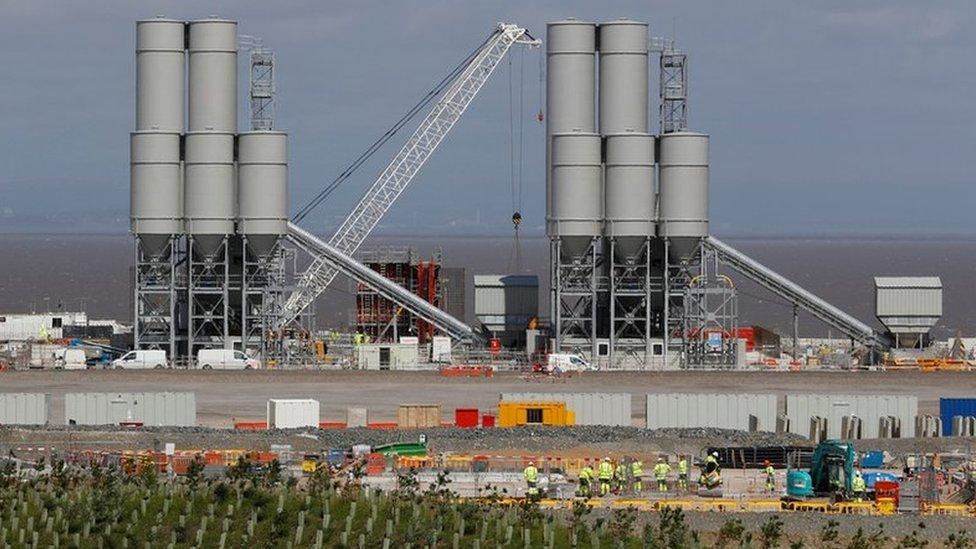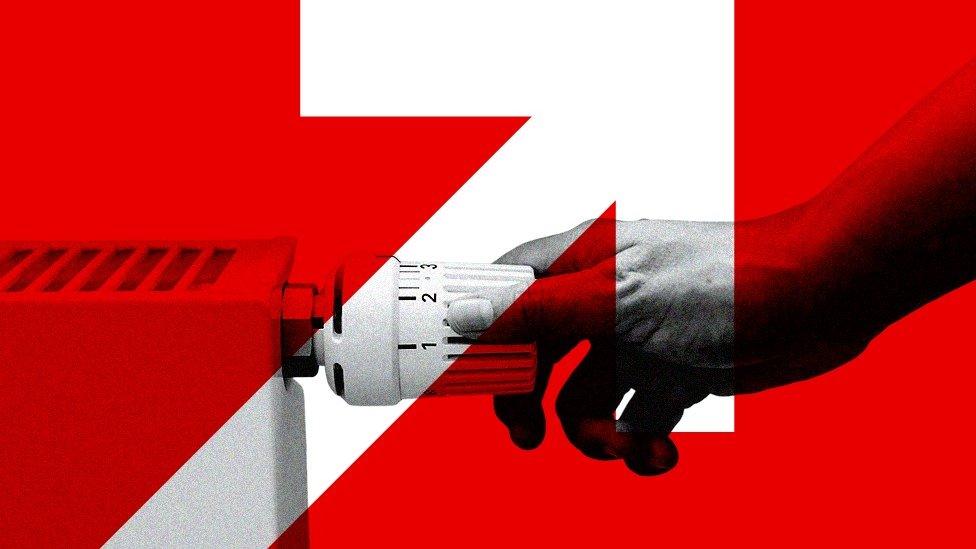Hinkley nuclear power station on track for 2026 opening
- Published
- comments
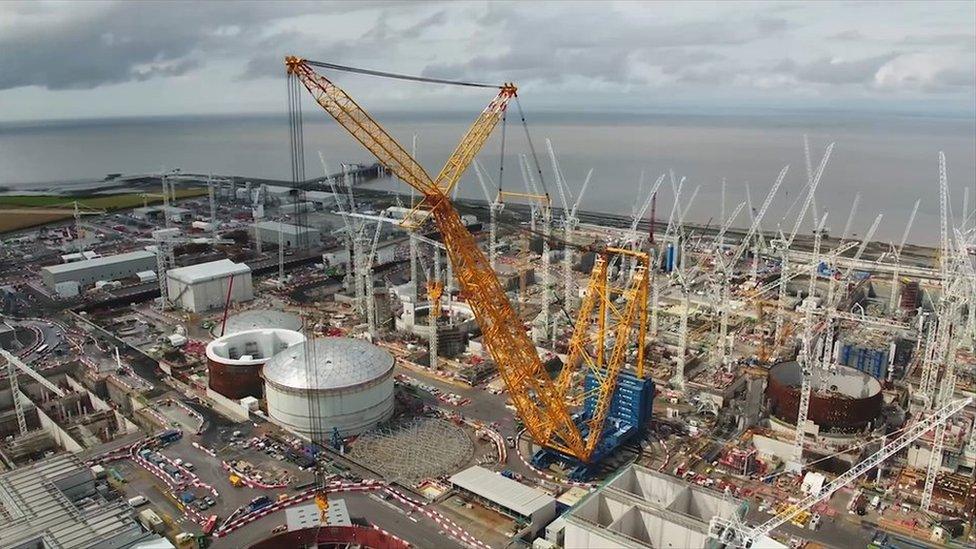
Europe's largest building site at Hinkley Point in Somerset, where two new nuclear reactors are being built
The UK's newest nuclear power station is on track to open by the end of 2026, the company building it has said.
Hinkley Point C in Somerset has been under construction by EDF Energy for five years.
Nigel Cann, who is in charge of the project, told the BBC his team was "absolutely focussed" on switching the plant on within that timescale.
Hinkley is the first nuclear power station to be financed entirely by two private companies.
EDF Energy and China General Nuclear Power Group are both state-owned but the plant is still an experiment on a global scale, and its progress is being carefully watched.
As usual, there are three questions. Will it be on time? On budget? And will it be good value when finished?
Will it be on time?
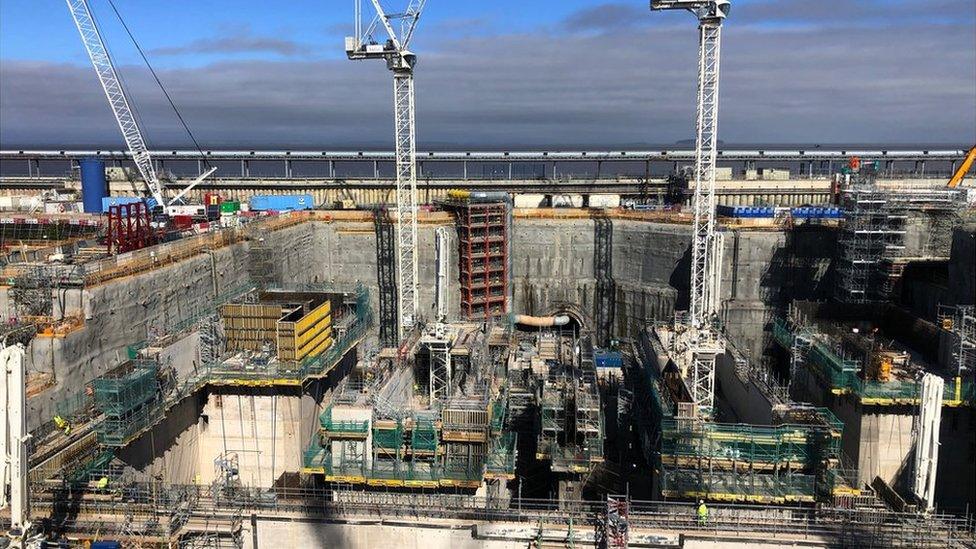
The "deep dig" at Hinkley Point C will house pumping equipment to control 120,000 litres of water per second, used for cooling the reactors
EDF Energy made the final decision to build at Hinkley Point on 29 September 2016.
I first visited the site when it was just fields. Today, it is a forest of more than 100 cranes. Beneath them, huge holes in the Somerset coastline are being filled with complex concrete structures.
So far they have poured 850,000 cubic metres of concrete, enough to fill 7,600 double-decker buses.
They have bored two huge tunnels two miles out into the Bristol Channel. Every second, 120,000 litres of water will come rushing in, to cool the two nuclear reactors and then back out through a third tunnel.
In 2016, EDF Energy said construction would take 10 years, and it has had five. So, has it done half the work?
"So far we've done 49% of our scheduled activities," said Mr Cann.
"And that's good, but we're also humble enough to know that we've got some big challenges ahead of us with the post-pandemic economic situation, like labour, the supply of materials, transportation, everything."
The pandemic set the project back six months, partly due to slower working on site with social distancing measures, and partly because suppliers slowed down too.
Now the construction is battling with big increases in costs of building supplies, and the UK's wider problems with HGV drivers.
Will the price go up?
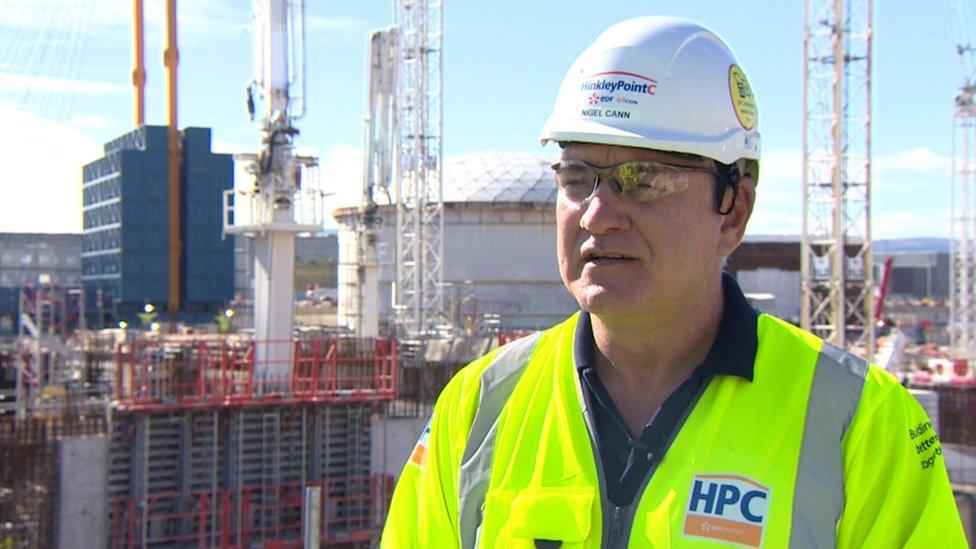
Nigel Cann, the man in charge of building Hinkley Point C, said he is "absolutely focussed" on finishing by 2026
When Hinkley was approved in 2016, EDF estimated the cost at £18bn. Today, the company puts the bill at nearer £23bn. So I asked, would it go up again?
"If it takes longer, it will cost more," said Mr Cann. "We're counting every penny, but the price to the consumer will never change, that's the beauty of the fixed-price deal we signed back in 2016.
"But the reality is our shareholders may have to invest more in the project as we move forward."
The deal he refers to is the so-called Strike Price for Hinkley C's electricity. Also in 2016, the British government fixed that price at £92.50 per megawatt hour (MWh). The price rises with inflation and has now reached £106/MWh.
Back then, the equivalent price for electricity from offshore windfarms was well over £120/MWh. But wind costs have fallen fast. Today new wind projects are fixed at about £50/MWh, well under half the price of Hinkley power.
So, the big question for Hinkley watchers is this. By 2026, will the electricity it produces look very expensive?
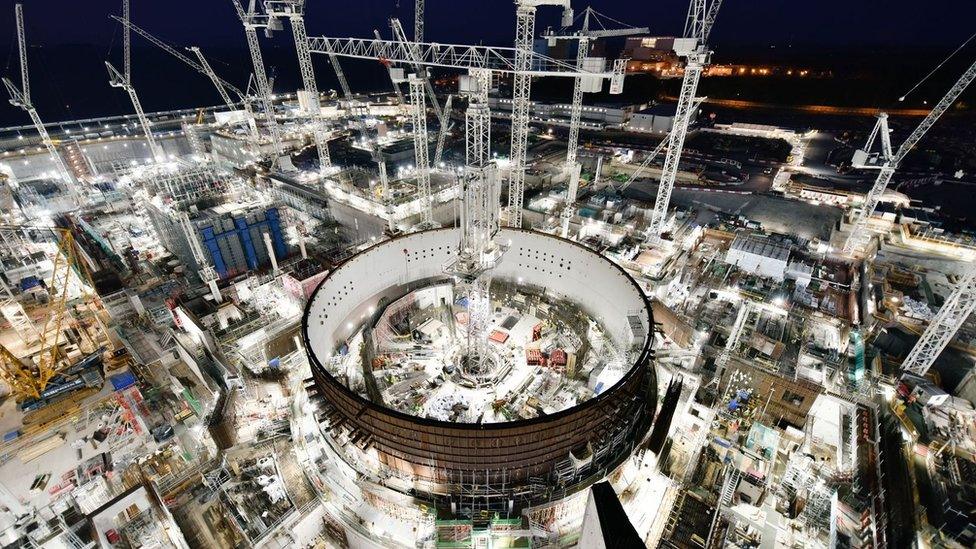
The power station will provide about 7% of the UK's total electricity needs.
Will it be good value?
Until recently, nuclear was considered expensive, albeit reliable, power. Hinkley will provide about 7% of the UK's total electricity needs.
It will run for at least 60 years, and the price is guaranteed for 35 years, rising only with inflation.
Wind and solar are much cheaper, but of course the wind does not always blow. In fact, this September wind produced 13.3%, external of the UK's total electricity, compared with 25% across 2020.
Until recently, these had been rather abstract ideas familiar only to energy analysts. Then the price of gas shot up on world markets, pushing electricity prices up too.

Building work began in 2016
Smaller energy firms, committed to supplying customers at fixed rates, could not pay the higher prices and went bust. Suddenly the price of electricity mattered to everyone.
Henry Edwardes-Evans, a respected analyst at S&P Global Power, said: "Yesterday we assessed October's electricity at £207 per MWh.
"Hinkley's contract is now at £106 - so Hinkley is now looking very good value."
Back at Hinkley Point, Mr Cann compares the price of his power to the fixed-price deals ordinary consumers sign up to.
He said: "It is essentially a fixed-price energy deal that we did in 2016, and like all fixed price deals it looks reasonably expensive at the time but now, actually, it looks pretty good value."

Follow BBC West on Facebook, external, Twitter, external and Instagram, external. Send your story ideas to: bristol@bbc.co.uk , external
Related topics
- Published29 September 2016
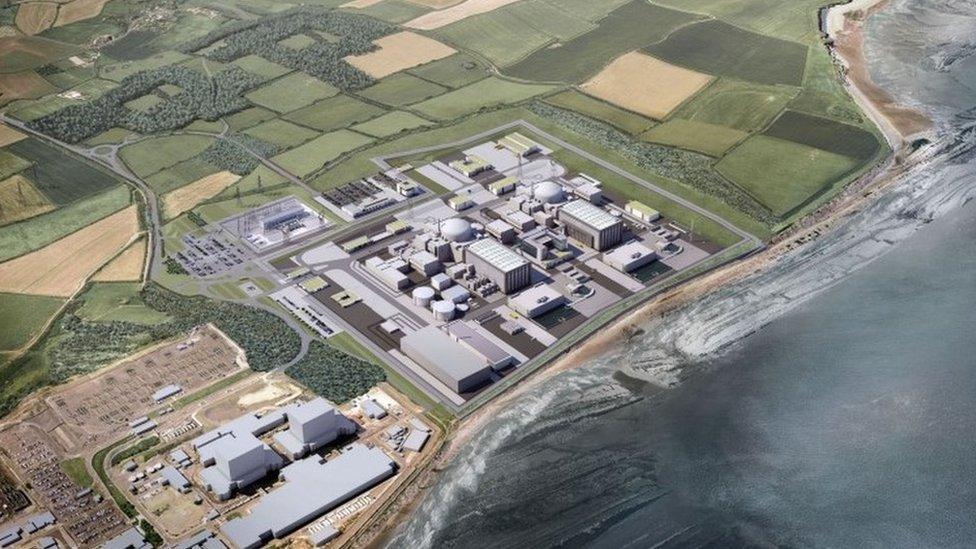
- Published27 January 2021

- Published3 July 2017
